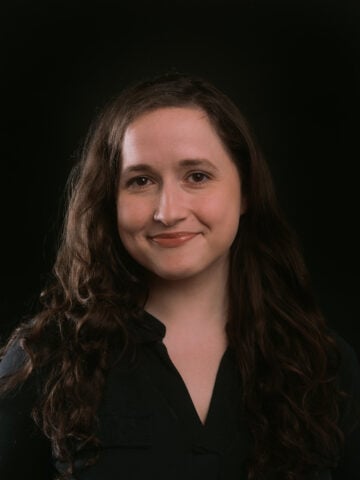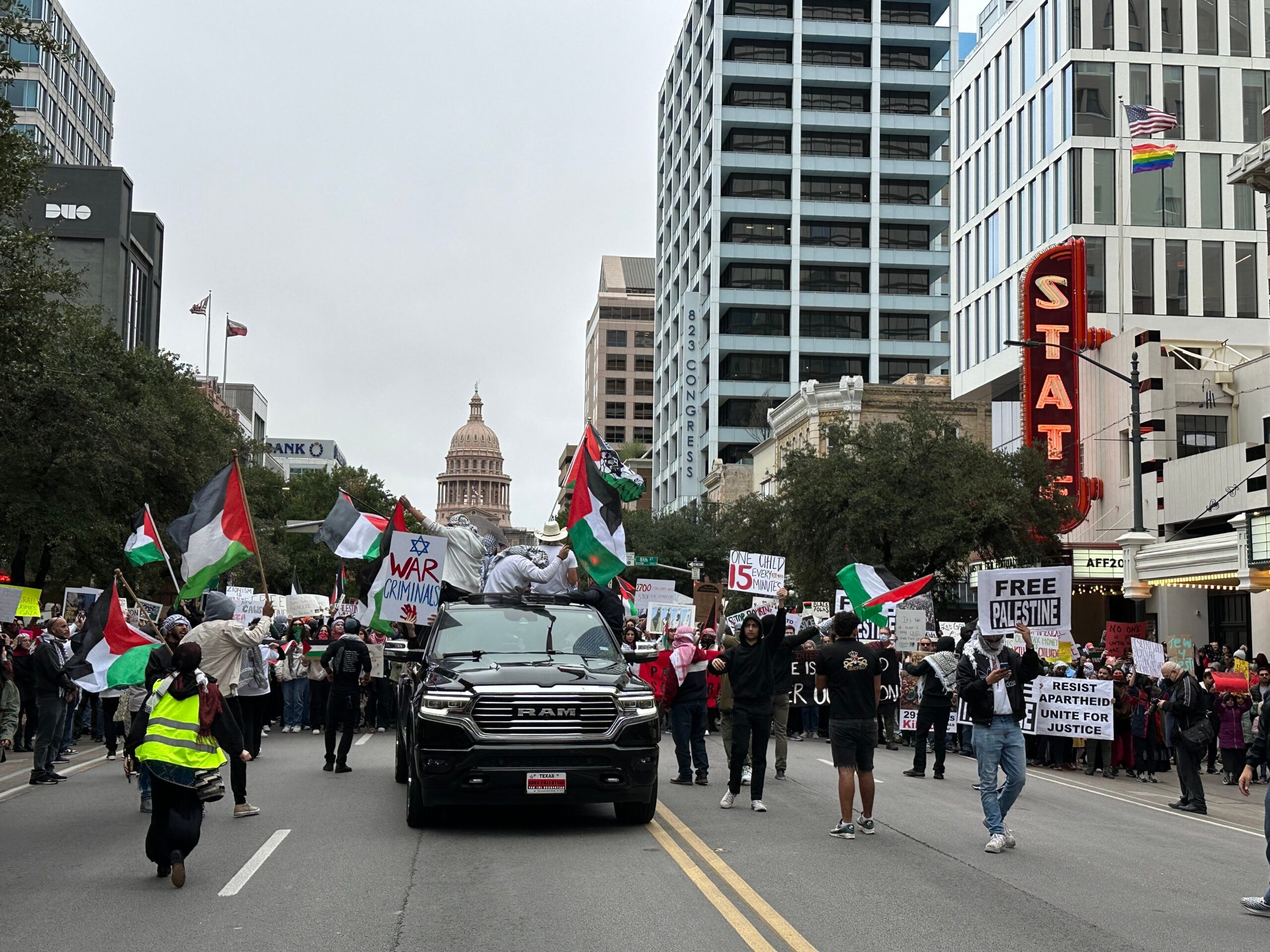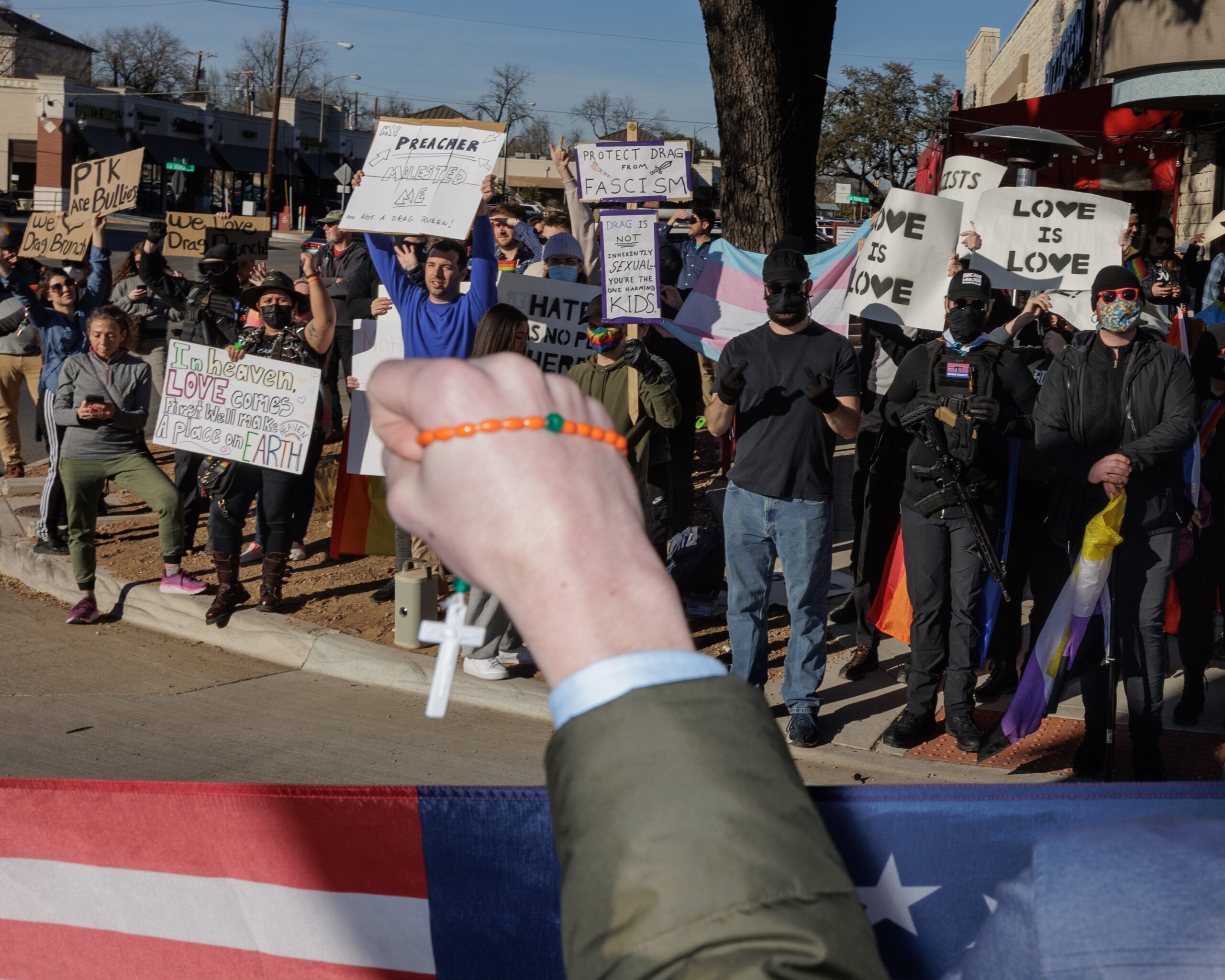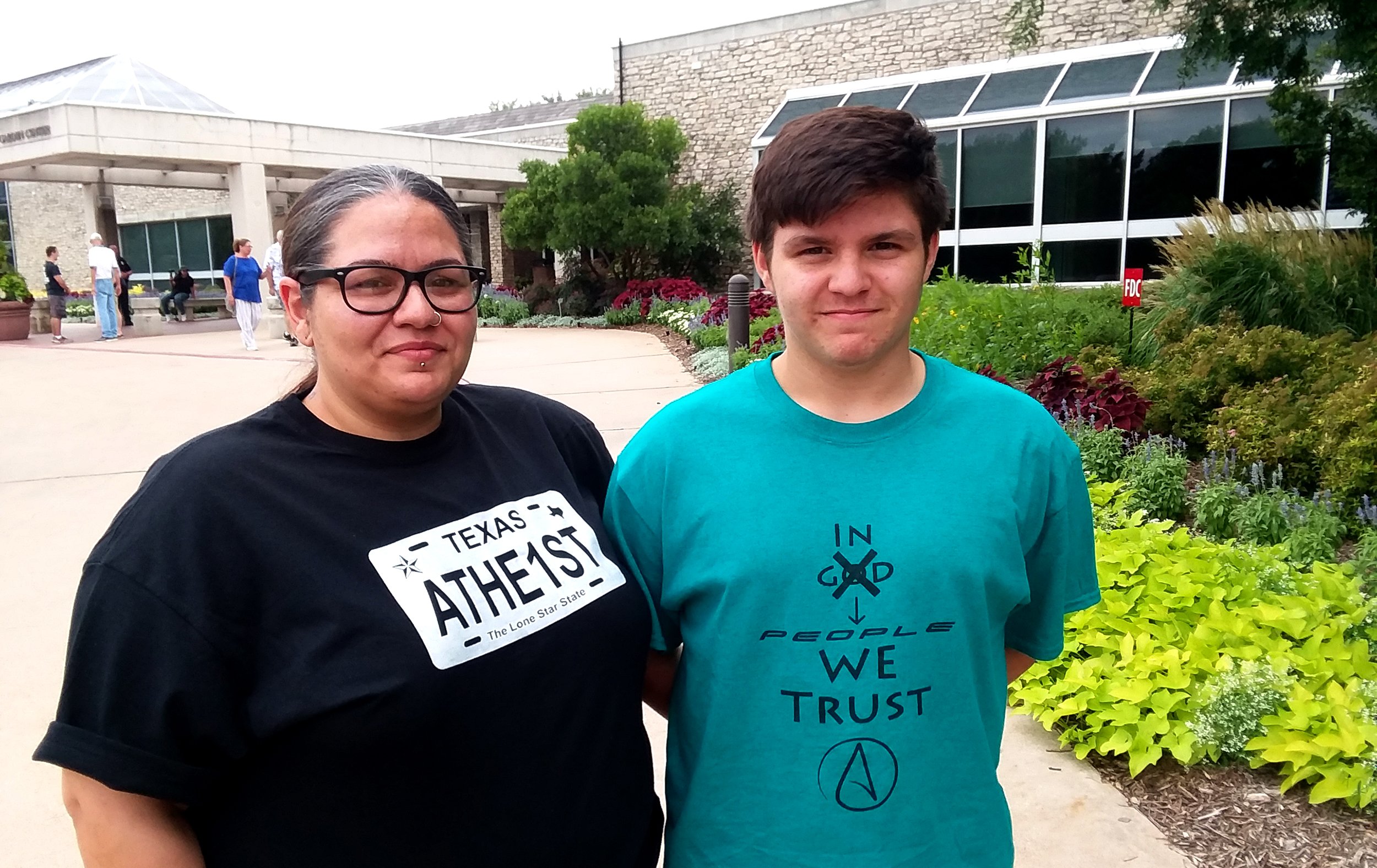
Advocates Request Clemency for Jewish Man on Death Row
Jedidiah Murphy is set to be executed on World Day Against the Death Penalty.

Update: Jedidiah Murphy was executed in Huntsville on October 10.
In the days before the execution, a federal district court granted him a stay of execution. The Fifth Circuit Court of Appeals upheld the lower court’s decision, despite a motion from the Attorney General’s office requesting the stay be vacated. Ultimately, the U.S. Supreme Court overturned the order and the execution went forward.
Jedidiah Murphy doesn’t claim to be innocent. He confessed to police shortly after killing 79-year-old Bertie Lee Cunningham during a carjacking in Dallas County on October 4, 2000. He was 25 at the time—he used Cunningham’s stolen credit cards to buy alcohol and cigarettes. He told the Texas Observer that he “confessed to this case before I was ever arrested, and that was because I wanted people to know the truth.”
From Texas’ death row, where he’s been for the past 22 years, he talks instead about repentance. As his execution date looms—October 10—advocates are working to gain public attention, and his attorneys have submitted a clemency petition to the Texas Board of Pardons and Paroles asking for his sentence to be commuted—or for his execution to be delayed. They point to potential issues with the punishment phase of his trial, mitigating factors from a tumultuous childhood, and years in prison devoted to his Jewish faith.
Murphy is set to be the first man executed by the State of Texas since March. The date chosen for his lethal injection also falls on the World Day Against the Death Penalty, an international event where advocates call for its abolition.
“I cannot undo what took place, and I carry that with me all the time, and I think it should be that way,” he wrote to the Observer. “It’s been hard and remains so. But God has given me time to heal mentally and it’s changed everything about me and my life. Whether or not that will change anything, I don’t know.”
Texas courts have shot down numerous appeals from Murphy over the past 22 years, and the U.S. Supreme Court has declined to hear his case. But his lawyers say a critical moment in the punishment phase of his trial has condemned him to death unfairly.
“I cannot undo what took place, and I carry that with me all the time, and I think it should be that way.”
When jurors decide whether to recommend the death penalty, they’re asked to determine whether the person is likely to be a danger in the future. In order to convince the jury Murphy posed a threat, the state attempted to link him to a reported crime from years prior.
Jurors heard testimony from a woman who alleged Murphy had kidnapped her years before Cunningham’s murder. She had contacted police three years after the incident after seeing Murphy’s photo on the news. She believed the photo looked like the man who attacked her.
“By falsely connecting him to these unadjudicated priors, the State was able to create a false impression that Jedidiah was a serial kidnaper who preyed upon vulnerable women,” the clemency petition says.
Lawyers have brought up this aspect of the case numerous times, attempting to poke holes in the alleged connection between Murphy and this crime: Murphy’s work record provides him what seems to be an alibi, the victim identification happened only after significant time had passed, she had been exposed to news reports of Murphy’s case, and—recently—his lawyers discovered that fingerprints from a car tied to the case didn’t match Murphy’s.
Police didn’t file kidnapping charges in the woman’s case because officers “could not determine whether [when IDing Murphy] she identified the man she saw on television or her assailant.”
When the death penalty is on the table, lawyers will often bring up mitigating evidence to argue that the defendant should be spared. In Murphy’s case, his lawyers describe his childhood as being “haunted by abandonment, death, and torment.”
According to legal documents, Murphy’s father was an abusive alcoholic. According to Murphy’s lawyers, his father beat him and his siblings with belts, kicked Murphy in the chest while wearing heavy work boots, and raped his daughter. When Murphy was four years old, his mother left and his father moved the children to his octogenarian parents’ home. Within months, Murphy’s grandfather died from emphysema, his grandmother was left bedridden by a major surgery, and his father died of liver failure. He was sent to live at the Buckner Children’s Home in Dallas.
“After being twice abandoned by his mother, and experiencing the death of three caregivers within a four-month period, Jedidiah began a turbulent journey through two different adoptive placements and various foster care institutions, all of which continued the cycle of trauma, abuse, and neglect,” reads the clemency petition.
Murphy and his brother went to live with a family who baptized him into the Southern Baptist Church. His new parents allegedly isolated the boys from their previous family and would starve them as punishment. When Murphy was five years old, his adoptive father allegedly began sexually abusing him.
Murphy and his brother were separated at their next placement. This is where Murphy—who was born Jim Kines—got the name Jedidiah Murphy. It’s also where he began displaying signs of mental illness.
“The violence was so shocking that I would rock myself in dark places, and learned to dissociate myself from the world where things like this took place,” Murphy wrote in a testimonial published online. “That dissociation would eventually lead me here, but that is where it all started.”
“The violence was so shocking that I would rock myself in dark places, and learned to dissociate myself from the world where things like this took place.”
He experienced auditory hallucinations, blackouts, and memory loss, and by the time he was 16 years old, he was addicted to alcohol. He graduated high school and spent some time in prison. He said he was “suicidal beyond measure” at this time.
Murphy stopped drinking for a time and had a daughter. He also reconnected with his biological family. He was working as a welder and raising his daughter and her half sister when the symptoms of his mental illness became increasingly intense.
Medical records show that Murphy sought help from psychiatric facilities multiple times leading up to the murder.
In 1999, the year before the murder, he checked himself into Glen Oaks Hospital. He told doctors there he was having lifelike hallucinations, seeing snakes “coming from everywhere.” On one occasion, he called the police. Officers didn’t find anything, despite Murphy saying “he could see snakes, hear them, see them, feel them, and kill them.” This was the first time Murphy had ever experienced visual hallucinations before. At this point, he had been sober for almost a month.
Doctors noted that, in addition to his hallucinations, he seemed “very anxious, agitated…seems very frightened of all these visual hallucinations that he’s experiencing. Seems very depressed, tears up easily, and has a real profound sense of depression.”
Over the next few months, Murphy would check in and out of treatment for his declining mental health. He was diagnosed with dissociative identity disorder, major depression, and alcohol dependency. His charts note that his mental faculties were deteriorating, including decision making, coping skills, and frustration tolerance.
Eventually, doctors deemed him a danger to himself and others. They put him on medication to deal with his increasing thoughts of “suicidality and homicidality.” But just a year later, he would go on to kill.
In his public testimonial, he writes that on the day he killed Cunningham, he doesn’t “remember leaving the house at all” and was “blinking in and out of control.”
More than 5,000 people have signed a petition asking Governor Greg Abbott to halt the execution. The text of the petition asks, “Should the State of Texas kill someone that they clearly failed time and time again as a child?”
Jedidiah Murphy has at least four certificates from the Texas Department of Criminal Justice (TDCJ) showing his successful completion of their chaplaincy department programs. He recently got involved with the first faith-based program on death row. His goal is to go to seminary and become a field minister in prison.
Murphy has been vocal about his faith while in prison. In 2016, he even had a sort of Bar Mitzvah in the visiting room of the prison—he hadn’t gotten one when he was a preteen in foster care. Texas Department of Criminal Justice Rabbi Dovid Goldstein helped him perform the rite of wrapping tefillin and saying a prayer. The rabbi told Chabad.org that he then “purchased some chips and soda from the vending machine, and we had a bar mitzvah reception.”
His case has garnered considerable support from several Jewish advocates and groups, including “L’chaim! Jews Against the Death Penalty” and Harvard professor and lawyer Alan Dershowitz. Dershowitz told the Jewish publication Forward that he’s trying to personally reach out to Abbott regarding Murphy’s case.
Michael Zoosman is the co-founder of L’chaim and a former prison chaplain. He noted the timing of Murphy’s scheduled execution falls just after the Jewish high holidays, a time devoted to repentance and atonement. He believes Murphy is “sincerely repentant.”
“I correspond with a lot of people. Many of them claim innocence—some are actually innocent,” Zoosman said. “Jedidiah has never done that … He’s always admitted to having taken a life and has been extremely repentant for that. And he’s done so despite the fact that he could have tried to make excuses.”
Murphy’s religion and impending execution has raised other issues for prison officials. TDCJ has agreed they will not embalm Murphy after his execution in order to comply with his religious beliefs. This decision came after Murphy filed a civil suit against several TDCJ leaders asking for a promise that nobody would tamper with his body after death.



